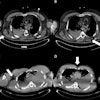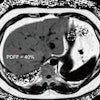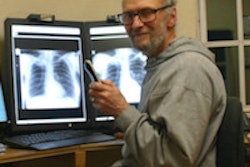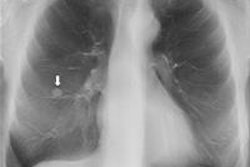Latin American migrants in Spain should be screened for Chagas disease, particularly women before pregnancy, using transthoracic echocardiogram (TTE), ECG, and MRI if results are abnormal, according to research presented at the European Association of Cardiovascular Imaging annual meeting, held last week in Seville, Spain.
Around 4.2% of the Latin American community living in Europe is infected with Chagas disease, according to the European Society of Cardiology (ESC). Spain is the most highly affected country in Europe, and it is estimated that between 50,000 and 70,000 people in Spain have the disease. The most common way to get Chagas disease outside of Latin America is when a mother passes the Trypanosoma cruzi parasite to her child during pregnancy.
In a study conducted at University Hospital La Paz-Carlos III in Spain, people of Latin American descent voluntarily came for screening for Chagas disease, and those with a positive blood test for T. cruzi are referred to a cardiologist.
The study included 145 patients with the parasite who had been referred to cardiology. The researchers took each patient's history, including their country of origin, and family history of Chagas disease or sudden death. Patients had a TTE, ECG, and physical examination. Patients with an abnormal TTE or ECG also received a cardiac MRI exam to look for a scar on the heart caused by Chagas disease. They also had 24-hour Holter monitoring to record their heart rhythm and identify bradycardia due to the disease.
Patients were 43 years old on average, 68% were women, and 93% were from Bolivia. More than one-third (34%) had an abnormal ECG, and of those, 31% had bradycardia. The most common block in the heart's electrical conduction system was right bundle branch block, according to the researchers.
More than 38% of patients had an abnormal TTE. Of these, 34% had a dilated left atrium and almost 15% had diastolic dysfunction. As almost none of these patients had hypertension -- the most common cause of dilated atrium in the general population -- the abnormalities are the result of Chagas heart disease.
According to the modified Rassi scale, which predicts Chagas patients' risk of dying in the next four years, 94% patients in the study were at low risk, 4% were at intermediate risk, and 2% were at high risk.
The study shows patients with Chagas disease may already have heart abnormalities even if they do not have symptoms, according to the authors.
Chagas disease was first described in 1909 by Dr. Carlos Chagas in Brazil. It is endemic in Latin America, where it is transmitted by bloodsucking bugs that typically live in the cracks of poorly constructed homes. Up to 40% of patients develop a chronic disease that primarily affects the heart and bowel, and carries a high risk of sudden cardiac death, according to the ESC.



















